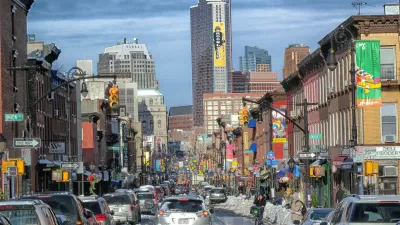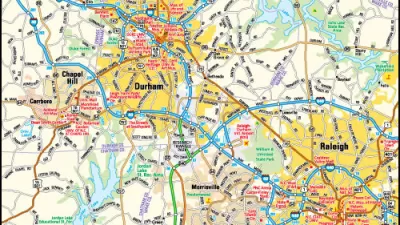North Carolina bills itself as the "good growth state." But as North Carolina's population heads toward 10 million, the state's low-density pattern of development is straining the infrastructure.
North Carolina, writes Bill Fulton, is like California during the period after World War II, when rapid growth threatened to overwhelm unprepared governments. North Carolina has "an unrelenting pattern of sprawl that is driven partly by the state's own rural past. Half of the state's residents use septic tanks and a third use water wells. Most residents aspire to the very large lot in the woodsy, rural-style landscape. There is virtually no urban tradition."
California's urban areas, however, are bounded by huge tracts of public land that limit the extent of low-density sprawl. Not so in the South Atlantic states, which struggle every day with a growing tension between a rural, agrarian past and an urban future.
FULL STORY: Is More Growth Bad For The 'Good Growth' State?

Maui's Vacation Rental Debate Turns Ugly
Verbal attacks, misinformation campaigns and fistfights plague a high-stakes debate to convert thousands of vacation rentals into long-term housing.

Planetizen Federal Action Tracker
A weekly monitor of how Trump’s orders and actions are impacting planners and planning in America.

In Urban Planning, AI Prompting Could be the New Design Thinking
Creativity has long been key to great urban design. What if we see AI as our new creative partner?

Portland Raises Parking Fees to Pay for Street Maintenance
The city is struggling to bridge a massive budget gap at the Bureau of Transportation, which largely depleted its reserves during the Civd-19 pandemic.

Spokane Mayor Introduces Housing Reforms Package
Mayor Lisa Brown’s proposals include deferring or waiving some development fees to encourage more affordable housing development.

Houston Mayor Kills Another Bike Lane
The mayor rejected a proposed bike lane in the Montrose district in keeping with his pledge to maintain car lanes.
Urban Design for Planners 1: Software Tools
This six-course series explores essential urban design concepts using open source software and equips planners with the tools they need to participate fully in the urban design process.
Planning for Universal Design
Learn the tools for implementing Universal Design in planning regulations.
Gallatin County Department of Planning & Community Development
Heyer Gruel & Associates PA
JM Goldson LLC
City of Camden Redevelopment Agency
City of Astoria
Transportation Research & Education Center (TREC) at Portland State University
Jefferson Parish Government
Camden Redevelopment Agency
City of Claremont





























